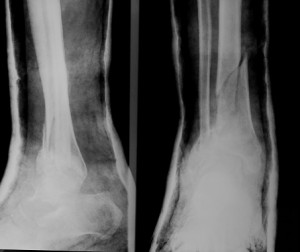
Osteoporosis is typically seen as a female condition, but men can still develop it. Osteoporosis is a bone disease that increases the risks of fractures, as the bones become weaker and more brittle over time. There are many factors that increase the risk of osteoporosis, including a lack of calcium, age and being female.
In 2015, a lot of news came to light in regards to osteoporosis, including prevention tips and treatment breakthroughs. Please enjoy Bel Marra Health’s 2015 roundup of osteoporosis news articles to not only educate yourself on the disease, but to create a better outcome for future generations in 2016.
Osteoporosis Cause: New genetic cause of osteoporosis found, rare gene identified
A team of researchers found a rare gene linked to osteoporosis.
Lead research Dr. Brent Richards said, “EN1 has never before been linked to osteoporosis in humans, so this opens up a brand new pathway to pursue in developing drugs to block the disease.” Supplementing author Vince Forgetta added, “The effect of this uncommon genetic variant that we identified in this gene is twice as large as any previously identified genetic variants for BMD and fracture.” Learn More
Exercise and Osteoporosis: Exercise benefits for osteoporosis, reduces bone fracture risk
A new study revealed that exercise can help reduce the risk of bone fractures.
Men over the age of 65 took part in a number of hopping routines that put stress on their hips. Hopping meant researchers could make comparisons between legs. CT scans were taken and analyzed through a bone mapping process that showed clear differences between the legs. After a full year of hopping, bone mass increases were observed. Most startling was that there were improvements in the thinnest areas of the bone. These areas are most at risk of fracture after a fall. Learn More
Women with Osteoporosis: Osteoporosis fracture risks in older women reduce by growth hormone
Researchers found that a growth hormone can reduce fracture risk in older women.
Osteoporosis is a chronic condition where bones become weaker over time, resulting in an increase of fractures. Researchers examined the role of a growth hormone for its ability to reduce the risk of fractures. Learn More
Menopause and Osteoporosis: Protection against osteoporosis in menopausal women may be possible with soybean foods
Soy protein and isoflavones can help prevent osteoporosis during menopause.
Osteoporosis commonly affects aging women and leads to fragile and brittle bones. In the years immediately after menopause women experience the greatest bone loss because they produce less estrogen which helps keeps bones strong.
As they contain certain isoflavones which act like estrogen, soybean foods play a crucial role in helping against bone loss.
Researchers from the University of Hull gave 200 women in early menopause a daily supplement of soy protein with soy isoflavones or just a supplement containing soy protein. The researchers analyzed changes in bone activity from the women’s blood. Learn More
Osteoporosis and Diabetes: Osteoporosis and bone fractures risk, role of type 1 and type 2 diabetes
Several research studies have discovered that type 1 and type 2 diabetes are osteoporosis risk factors.
An alternative study revealed that the duration of diabetes also plays a role in bone health. They found that even women who had type 1 diabetes for less than five years had a 12.25 increase in bone fractures when compared with non-diabetic women.
Previous research revealed that type 2 diabetes could actually protect the bones as added body weight can make them stronger. But recent findings suggest otherwise. Learn More